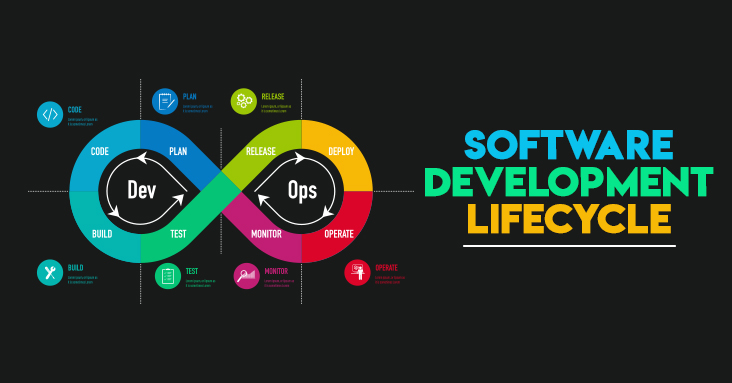11 Benefits of Software Development Lifecycle
Accelerate innovation with DevTools Software Development solutions — streamline coding, automate testing, and deploy faster. Book a demo to see how we boost your productivity!
14 +
Years of Experience
550 +
Happy Customers
250 +
Years of Tech Leadership Exp.

"License Reseller" and "Consulting & Implementation" Partner

Overview
Developing robust software is similar to constructing a new building. As a construction project requires careful planning, design, execution, and testing to build a strong and sturdy structure, software development also follows a similar sequence of steps.
In software terms, the process is called the Software Development Life Cycle or SDLC.
Following SDLC has various advantages such as high-quality output, better team collaboration, risk management, and many more. In this blog, we discuss 11 such key benefits of SDLC and see how SDLC and DevTools together can reform your software development process to help you achieve your project goals. Before we go ahead, let us briefly understand the SDLC and its phases.
What is the Software Development Lifecycle?
The Software Development Life Cycle (SDLC) is a structured approach to software development that guides the whole process from its inception phase to the software launch. The approach ensures effective project management by splitting the process into various phases – planning, designing, coding, testing, deployment, and maintenance. Each of these phases has a specific set of activities and deliverables that results in a streamlined process. While navigating through these phases, the software development life cycle makes sure that the project is executed and finished in an organized manner.
Phases of Software Development Lifecycle
Planning

In this phase, stakeholders and software development teams use various tools to collaborate and define the project’s objectives and requirements. While tools like Jira Software and Trello help manage their tasks and workflows, tracking tools such as Jira Work Management monitor their progress and performance. Teams can also leverage software like Atlas in this phase to visualize and connect their teams and contributions to project goals. On the other hand, the Jira Product Discovery tool enables the capturing and prioritization of their ideas and insights. These tools also help them resolve any ambiguities concerning the project before moving to the next phase.
Designing

The design phase is dedicated to software architecture. This phase includes the design of the core software components and their specifications. Tools such as Confluence play a crucial role in creating, collaborating, and organizing the software architecture.
Coding

Based on the design specifications developed in the previous phase, developers write code for the software in the coding phase. Version control platforms like Bitbucket, GitLab, and GitHub enable collaborative coding, and JetBrains IDEs provide a development environment for a smooth coding experience.
Testing

In this phase, the testing team tests the entire software system for its functional accuracy. Testing tools like Xray and Zephyr rescue the testing team in this phase as they facilitate comprehensive testing. Tricentis Tosca, the codeless test automation platform, integrates seamlessly and offers efficient test management and execution. The process also involves user acceptance testing, which helps understand the user experience and gather feedback before moving to the next stage.
Deployment

The deployment phase is the time to make the software available and functional for the end-users. This phase involves using tools like Octopus Deploy, CloudBees, or others to automate the software deployment to the server or its distribution to the users.
Management

During this phase, the product team provides continuous maintenance and support by resolving bugs or security issues. Moreover, the team leverages tools like Jira Service Management, Statuspage, and LaunchDarkly to manage new features and enhancements, communicate service status, and experiment with feature flags.
Apart from these standard stages of the Software Development Life Cycle, other processes, such as continuous integration and release management, are also integral parts of the software development process. While Continuous Integration (CI) tools, such as CloudBees, Bitbucket Pipelines, and GitHub Actions, automate the integration of code into shared repositories, tools like JFrog Artifactory manage artifact repositories. To manage the releases effectively, feature management tools such as LaunchDarkly play a crucial role as they enable feature flagging and controlled feature releases.
Additionally, development teams cannot ignore the role of AI tools like Atlassian Intelligence and GitHub Copilot which can enhance team productivity by providing insights and assisting in code generation at various stages of the SDLC.
Benefits of Software Development Life Cycle
- Enhances Product Quality: The Software Development Lifecycle ensures product quality by introducing quality checkpoints throughout the process. From the planning phase to testing, these checkpoints minimize the chances of errors eventually resulting in a quality deliverable. This approach not only saves the cost of rework but also maximizes user satisfaction through improved output.
- Improves Project Management: The Software Development Lifecycle provides a clear roadmap to software development. It defines milestones characterized by deliverables, deadlines, and resource allocation. Further, it facilitates transparent communication within the team. DevTools integrates with popular SDLC methodologies and offers real-time insights into progress, potential issues, and resource utilization.
- Manages Risks Effectively: Projects face various risks at all stages, from planning to maintenance. The Software Development Lifecycle helps identify these threats early on and helps developers take measures to minimize their impact on the project’s progress. DevTools integrates features like issue tracking, code review tools, and automated testing into your workflow so you can mitigate risks before they cause any harm.
- Structured Approach: The Software Development Lifecycle provides a foundation for the development process. It ensures a structured workflow resulting in the elimination of redundant tasks and better team collaboration. The approach defines the roles and responsibilities of various teams, stakeholders, developers, testers, etc, in every stage of the lifecycle. That is, all teams can work on their respective tasks seamlessly while ensuring everyone is aligned with the project goals. DevTools offers a common communication platform for sharing information, storing documents, managing versions, etc. letting the whole team work in harmony.
- Helps Avoid Issues During Development: The Software Development Life Cycle (SDLC) focuses on preventive measures so that issues can be identified and addressed early in the development process. By doing so, projects can not only save time and resources but also prevent critical bugs in later stages of the cycle. DevTools further promotes this preventive approach and ensures bug-free products by providing a comprehensive suite of automated testing tools, from unit testing to performance testing.
- Enhances Communication and Collaboration: The Software Development Life Cycle (SDLC) promotes a collaborative environment, involving all team members and ensuring everyone stays informed. DevTools serves as a communication platform, enabling smooth information sharing, efficient document management, and effective version control. This approach minimizes gaps among the teams and ensures a cohesive development process.
- Enables efficient resource utilization: Efficient resource utilization translates into higher productivity. By defining the roles and responsibilities of the team, the SDLC allows for clarity and continuity of effort. DevTools provides a unified platform for various software developmental tasks. This eliminates chances of context switching and time wasted on it. The developers can focus on tasks instead of tools, reduce errors, automate tasks, utilize resources, and improve productivity.
- Streamlines Process: The Software Development Lifecycle provides direction and structure to every phase of the software development process. From inception to launch, it ensures a smooth and efficient workflow by defining deliverables and milestones. DevTools integrates seamlessly with popular SDLC methodologies and automates several tasks which improve the overall efficiency of the software development process.
- Helps early identification of potential issues: Early detection of potential issues can save time and cost for the organization. The Software Development Lifecycle helps implement communication channels for timely reporting of problems and feedback loops that facilitate quick corrective measures. Hence, the projects can progress smoothly without hitting any major roadblocks. Devtools amplifies this threat detection process by offering additional features like issue tracking, code review tools, and automated testing.
- Ensures thorough testing: The Software Development Lifecycle promotes rigorous testing at every stage of software development. This ensures that reliable and user-friendly software is generated. By offering a suite of automated testing tools, DevTools enables testing individual units of codes, how they work in an integrated framework, and their performance aspects. As a result, it improves the overall software quality and makes it ready to be deployed.
- Promotes consistency: Consistent practices reflect the team’s professionalism. From code formatting to documentation, the Software Development Lifecycle guides the teams to follow standard practices throughout the software development process. DevTools fosters this consistency by providing tools and templates to adopt coding standards and documentation guidelines. This leads to a unified and well-structured codebase.
Conclusion:
Integrating SDLC principles into your development process might seem overwhelming. But fear not. DevTools is here to help as your trusted partner in the DevSecOps integration process. We offer more than just a collection of individual tools. Our focus is to provide a unified platform that works seamlessly with popular SDLC methods. By embracing the combined power of SDLC and DevTools services, you can create top-notch software with confidence and efficiency. Now, you have the secret to success. Adopt SDLC today, and let DevTools guide you!




